- Home
- Features
- Business
- Active
- Sports
- Shop
Top Insights

Top 10 Web3.js Subscribe Alternatives
Web3.js Subscribe is a feature within the Web3.js library that enables developers to subscribe to real-time updates on various events occurring on the Ethereum blockchain. This functionality allows applications to listen for and react to specific blockchain events as they happen, providing a dynamic and interactive user experience.
Key Features of Web3.js Subscribe
- Event Listening: Allows applications to listen for specific events, such as new blocks being added to the blockchain, pending transactions, and smart contract events.
- Real-Time Updates: Provides real-time notifications and updates, enabling applications to respond immediately to changes on the blockchain.
- WebSocket Support: Utilizes WebSocket connections for efficient and continuous data streaming, reducing latency compared to polling methods.
Despite the key features, there are certain disadvantages as well:
Complexity and Learning Curve
- Steep Learning Curve: Web3.js can be challenging to learn for developers new to blockchain technology due to its complexity and the intricacies of blockchain concepts.
- Advanced Knowledge Required: Understanding Web3.js effectively often requires a deep understanding of Ethereum, smart contracts, and decentralised applications (dApps).
Performance Issues
- Latency: Web3.js can experience latency issues, especially when interacting with remote Ethereum nodes. This can affect the responsiveness of dApps that rely on real-time data.
- Scalability: Handling a large number of requests or large-scale applications may lead to performance bottlenecks, affecting the overall user experience.
Lack of Data and Flexibility
- Developers cannot filter data flexibly; they are restricted to predefined methods and responses, making it challenging to tailor data queries to specific needs.
Ecosystem and Compatibility
- Node Compatibility: Different Ethereum nodes (such as Geth, Parity) may have slight differences in their APIs and behavior, leading to compatibility issues.
- Versioning Issues: Frequent updates and changes in Web3.js versions can cause compatibility problems and require continuous maintenance to keep applications up to date.
These disadvantages often prompt developers to explore and adopt other alternatives, such as those listed below.
List of Web3.js Subscribe Alternatives
1. Bitquery
Bitquery is a versatile blockchain data provider that offers a suite of APIs for accessing and analyzing data across 40+ blockchains. It provides developers with powerful tools to query, subscribe, and monitor blockchain events and data in real-time. Bitquery’s APIs are designed to be user-friendly, making it easier for developers to integrate blockchain data into their applications.
Bitquery offers various resources and APIs that support real-time data subscriptions. These resources allow developers to receive instantaneous updates about specific blockchain events, transactions, and state changes. The primary subscription features are available through WebSocket connections, ensuring low latency and high efficiency in data delivery.
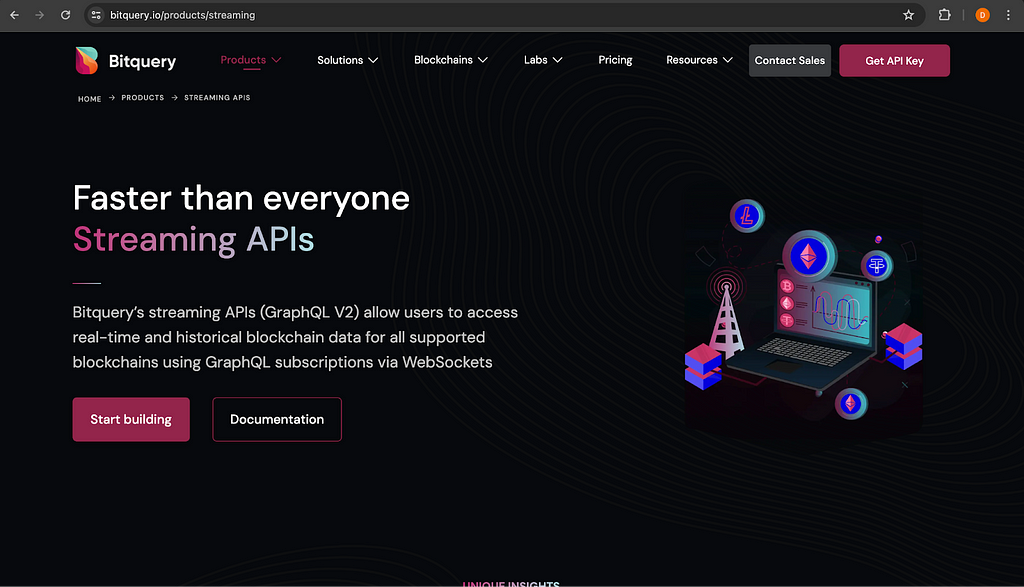
Exploration of Data Points Available Through Bitquery Subscriptions
Trades
- Real-Time Trade Data: Bitquery provides real-time updates on trades happening across various decentralized exchanges (DEXs) on Solana, EVM chains, and even Layer-2 solutions like Base and Arbitrum.This includes trade details such as the trading pairs, trade volumes, and prices.
- Use Case: Ideal for developing trading bots, monitoring market trends, and integrating live trade data into financial dashboards.
Transactions
- Live Transaction Monitoring: Bitquery allows subscriptions to real-time transaction updates. Developers can monitor transactions as they are broadcasted, confirmed, or rejected on the blockchain.
- Use Case: Useful for applications that need to track specific transactions, monitor wallet activities, or implement transaction alerts.
Token Holders
- Token Holder Updates: Real-time subscription to changes in token holdings, including transfers and balance updates. This feature is particularly useful for monitoring whale movements or large token holders.
- Use Case: Beneficial for token analytics platforms, portfolio management tools, and compliance monitoring.
NFTs
- NFT Transfer Monitoring: Subscribe to real-time updates on NFT transfers, minting, and burning events. This includes details about the token ID, sender, receiver, and associated metadata.
- Use Case: Essential for NFT marketplaces, collectors, and tracking the provenance and movement of digital assets.
Mempool:
The mempool is a critical component of blockchain networks, where all pending transactions are stored before they are confirmed and included in a block. Monitoring the mempool provides valuable insights into the current state of the network and pending activities.
Top Crypto Reconciliation Tools: A Close Analysis
2. Ethers.js
Ethers.js is a popular library for interacting with the Ethereum blockchain, and it provides robust support for subscriptions to various real-time data points using event listeners. Here are the key data points that can be accessed through Ethers.js subscriptions:
- Block Data: Ethers.js can subscribe to new block headers as they are mined, providing key details such as the block number, the Unix timestamp of the block, and the list of transactions included in the block.
- Transaction Data: It also allows subscriptions to new transactions as they are mined. This includes essential details like the transaction hash, the hash of the block that contains the transaction, and the number of the block that contains the transaction.
- Log Data (Event Data): For logs (events) emitted by smart contracts, Ethers.js can subscribe and provide data such as the address of the contract that emitted the event and the topics of the event (indexed event parameters).
- Pending Transaction Data: Ethers.js can subscribe to new transactions that are broadcast to the network but not yet mined. This includes the transaction hash and the address of the sender.
- Filters and Custom Subscriptions: Ethers.js allows developers to create custom filters for subscriptions, enabling more specific data monitoring. For example, developers can monitor transactions to or from a particular address, listen for specific smart contract events by their signature, or subscribe to events occurring within a specific block range. This flexibility makes Ethers.js a powerful tool for building responsive and interactive blockchain applications.
Top Crypto Investigation Services
3. Alchemy Web3
Alchemy Web3 is a powerful blockchain development platform that provides enhanced APIs for interacting with the Ethereum blockchain. It offers robust subscription capabilities, allowing developers to subscribe to various real-time data points. Here are the key data points that can be accessed through Alchemy Web3 subscriptions:
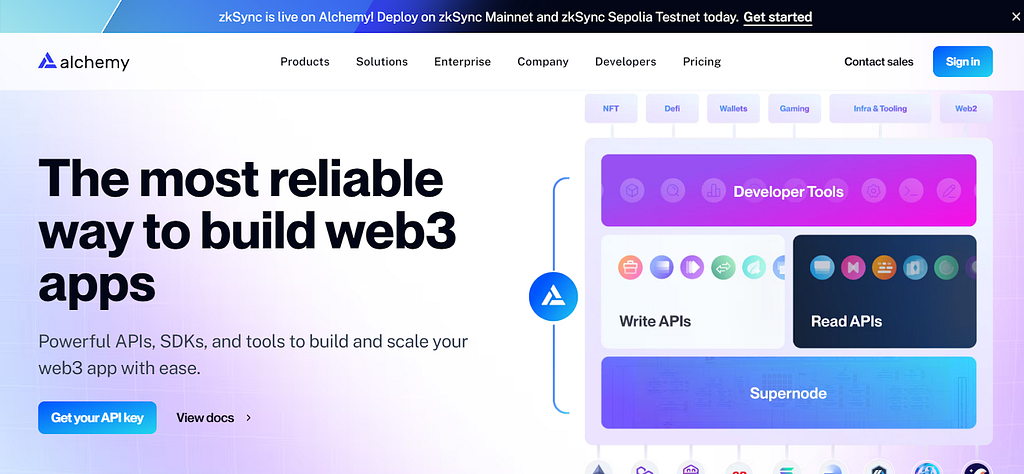
- Alchemy Web3 offers a variety of subscription capabilities that enable developers to stay updated with real-time blockchain activities.
- One such capability is subscribing to new block headers as they are mined through the newBlockHeaders method. This includes data points such as the block number, block hash, and the hash of the parent block.
- Additionally, new pending transactions can be tracked using the pendingTransactions subscription, which provides details like the transaction hash, sender’s address, and receiver’s address for transactions broadcast to the network but not yet mined.
- For event logs emitted by smart contracts, the logs subscription captures the address of the contract emitting the event, the event topics (indexed parameters), and the event data (non-indexed parameters).
- To monitor pending transactions involving a specific address, the alchemy_pendingTransactions subscription is used, detailing the sender’s and receiver’s addresses along with the transaction hash.
- Lastly, the alchemy_filteredLogs subscription is available to subscribe to event logs that match a specific filter, including the contract address emitting the logs, the event signature or other topics used to filter logs, and the data field of the log. This comprehensive set of subscription options ensures that developers can efficiently track and respond to relevant blockchain events in real-time.
4. Infura
Infura is a popular Ethereum infrastructure provider that offers robust APIs for interacting with the Ethereum blockchain. It provides subscription capabilities for various real-time data points using WebSockets. Here are the key data points that can be accessed through Infura subscriptions:
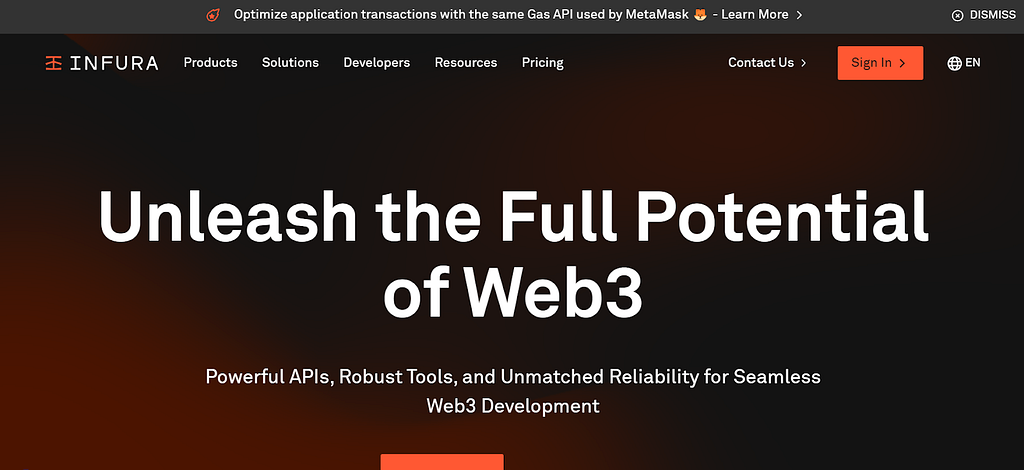
- Web3.js provides various subscription methods to monitor real-time blockchain activities. One of these is the subscription to new block headers, `newHeads`, which allows users to receive updates whenever new blocks are mined.
- The data points available in this subscription include the block number, block hash, and the hash of the parent block. Another subscription method is `newPendingTransactions`, which focuses on new transactions broadcast to the network but not yet mined.
- This subscription provides details such as the transaction hash, the sender’s address, and the receiver’s address. Additionally, Web3.js supports subscribing to event logs emitted by smart contracts through the `logs` subscription.
- The relevant data points for this subscription include the address of the contract that emitted the event, the topics (indexed event parameters), and the data of the event (non-indexed event parameters). These subscriptions collectively offer a comprehensive way to track blockchain activity in real-time.
Top 10 Blockchain data APIs (Indexed Data Provider)
5. Nethereum
Nethereum is a .NET library for interacting with Ethereum, providing robust support for real-time data subscriptions using WebSockets and JSON-RPC. Here are the key data points that can be accessed through Nethereum subscriptions:
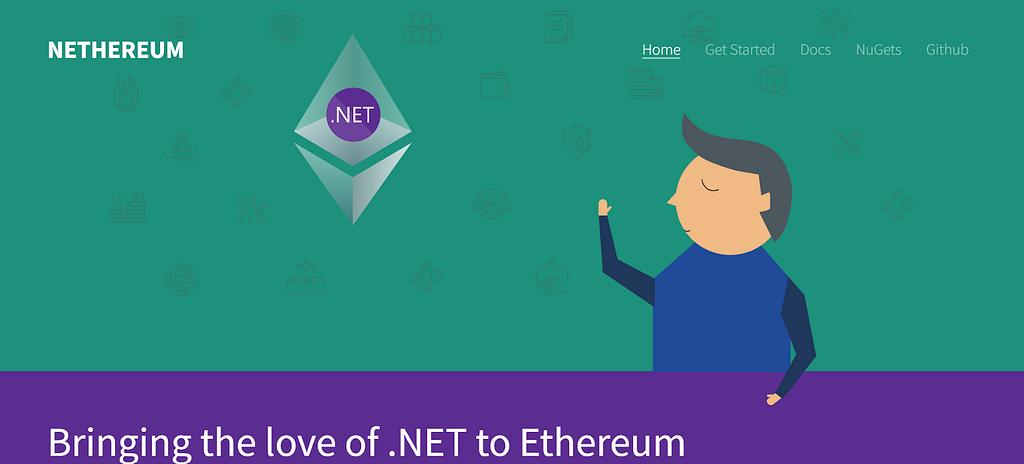
- Web3.js provides several subscription options to monitor blockchain events in real time. For new blocks, the NewBlockHeaders subscription allows you to receive updates as new block headers are mined, including details such as the block number, block hash, and the hash of the parent block.
- For pending transactions, the NewPendingTransactions subscription notifies you of new transactions broadcast to the network that are not yet mined, providing information like the transaction hash, sender’s address, and receiver’s address.
- Additionally, the Logs subscription enables you to subscribe to event logs emitted by smart contracts, including the address of the contract, event topics (indexed event parameters), and event data (non-indexed event parameters).
- Lastly, the Syncing subscription provides updates on the node’s syncing status, detailing the block at which syncing started, the current block being synced, and the highest block the node has seen.
14 Best Crypto API & Blockchain APIs for Developers
6. Solana Web3.js
Solana Web3.js is a library for interacting with the Solana blockchain, providing robust support for real-time data subscriptions. Here are the key data points that can be accessed through Solana Web3.js subscriptions:
- Account Change Notifications allow subscriptions to changes in an account’s state, including details such as the account’s public key (accountId), the public key of the program owning the account (owner), and the account’s balance in lamports.
- Program Change Notifications enable subscriptions to changes in accounts owned by a specific program, providing information on the program’s public key (programId), the account’s public key (accountId), and the owner program’s public key (owner).
- Slot Notifications facilitate subscriptions to slot changes, detailing the parent slot (parent), the current slot (slot), and the root slot (root). Root Notifications allow subscriptions to notifications when a new root is set, specifying the new root slot (root).
- Signature Status Notifications subscribe to status changes of a specific transaction signature, offering details on the transaction signature (signature), the transaction’s status (status), and the confirmation status (confirmationStatus).
- Finally, Logs Notifications enable subscriptions to transaction log messages, including the transaction signature (signature), the log messages for the transaction (logs), and any errors if the transaction failed (err).
7. Polygon Web3.js
Polygon Web3.js, an adaptation of the popular Web3.js library for the Polygon blockchain (formerly known as Matic), allows developers to interact with the Polygon network similarly to how they would with Ethereum. The subscription capabilities provided by Polygon Web3.js enable real-time monitoring of various data points. Here are the key data points that can be accessed through Polygon Web3.js subscriptions:
- The Polygon network offers several subscription capabilities for real-time blockchain data monitoring. The “newBlockHeaders” subscription allows users to receive updates on new block headers as they are mined on the Polygon network, including details such as the block number, hash, and parent block hash.
- For transactions, the “newPendingTransactions” subscription tracks new transactions broadcast to the Polygon network but not yet mined, providing information like the transaction hash and the sender’s address.
- Additionally, the “logs” subscription captures event logs emitted by smart contracts on the Polygon network. This includes the address of the contract that emitted the event, the topics (indexed event parameters), the data (non-indexed event parameters), and the block number containing the log.
- These subscription features enable comprehensive real-time monitoring and analysis of blockchain activities on the Polygon network.
12 Best Blockchain Analysis Tools
8. Binance Smart Chain Web3.js
Binance Smart Chain (BSC) Web3.js allows developers to interact with the Binance Smart Chain network similarly to how they would with Ethereum, utilizing the Web3.js library. Here are the key data points that can be accessed through BSC Web3.js subscriptions:
- The Binance Smart Chain network offers various subscription options to monitor different activities. The “newBlockHeaders” subscription allows users to receive updates on new block headers as they are mined, providing information such as the block number, the block hash, and the parent block’s hash.
- For tracking new transactions that are broadcast but not yet mined, the “newPendingTransactions” subscription provides details including the transaction hash and the sender’s address.
- Additionally, the “logs” subscription enables users to listen for event logs emitted by smart contracts, offering details such as the contract address, event topics (indexed parameters), and event data (non-indexed parameters).
- Lastly, the “syncing” subscription provides notifications about the node’s syncing status, including the starting block, the current block being synced, and the highest block the node has encountered.
9. Near.js
Near.js is a JavaScript library for interacting with the NEAR Protocol blockchain, offering subscription capabilities for real-time data. Here are the key data points that can be accessed through Near.js subscriptions:
- The blockchain continuously evolves with the addition of new blocks and transactions, leading to various state changes and event emissions. When a new block is added, it comes with specific details such as the block hash, block height, block timestamp, and the transactions included in the block.
- Similarly, new transactions processed on the blockchain include information such as the transaction hash, sender and receiver account IDs, actions performed (e.g., transfers or contract calls), and the transaction’s status (e.g., success or failure).
- These transactions cause changes in the blockchain state, including updates to account balances, smart contract states, storage usage, and access key modifications.
- Additionally, transaction receipts provide detailed information like the receipt ID, predecessor and receiver account IDs, outcome status, and gas used. Custom events emitted by smart contracts are characterized by event type and event data as defined by the contract.
10. AvalancheJS
AvalancheJS is a JavaScript library for interacting with the Avalanche blockchain, providing robust support for real-time data subscriptions. Here are the key data points that can be accessed through AvalancheJS subscriptions:
- New Blocks and New Transactions can be subscribed to on the Avalanche blockchain. When subscribing to New Block Headers, users receive updates as new blocks are mined.
- Each block header contains essential information including the block number, block hash, and the parent block’s hash. Subscribing to New Transactions allows users to track transactions included in blocks, providing details such as the transaction hash, the sender’s address, and the receiver’s address.
- Additionally, users can subscribe to Events (Logs) emitted by smart contracts on the Avalanche blockchain.
- These events include the address of the contract that emitted the event, the topics of the event which are the indexed event parameters, and the data of the event which are the non-indexed event parameters.
11. Tezos Toolkit
The Tezos toolkit provides a comprehensive set of tools for interacting with the Tezos blockchain. While there are various libraries and SDKs available, such as Taquito for JavaScript/TypeScript, none of them directly support subscriptions like Web3.js does for Ethereum. However, you can achieve similar functionality using other mechanisms like polling or integrating with Tezos-specific indexing services.
Here are some key data points you can access and monitor through the Tezos toolkit:
- On the Tezos blockchain, you can monitor new blocks as they are baked. Each block is identified by its unique block number and hash, and includes a timestamp indicating when it was created.
- Similarly, you can track new transactions as they occur, with each transaction being identified by a unique hash, along with the sender’s and receiver’s addresses.
- Additionally, various operations such as endorsements, proposals, and delegations can be monitored. Each operation is identified by its hash and type, with specific details provided depending on the nature of the operation.
12. Rsk.js
RSK.js, a JavaScript library for interacting with the RSK blockchain, provides a range of functionalities for developers. Various data points on the RSK blockchain can be accessed by using polling mechanisms or by integrating with external services that offer subscription capabilities. Here are some key data points you can access and monitor through RSK.js:
- On the RSK blockchain, you can periodically poll the network to fetch new blocks as they are mined. Each block contains a block number, a unique block hash, and a timestamp indicating when it was mined.
- Additionally, you can retrieve new transactions as they occur, each identified by a transaction hash and containing the sender’s and receiver’s addresses.
- For monitoring events, you can query smart contract logs periodically, although this is not a real-time subscription.
- These logs provide information about events emitted by smart contracts, including the event name and the associated event parameters.
13. Hedera JavaScript SDK
In the Hedera JavaScript SDK, you can subscribe to various events and data points related to the Hedera Hashgraph network. Here are the main data points and events you can subscribe to:
- The system facilitates various functionalities including monitoring changes in account balances, tracking transaction statuses, subscribing to messages in Hedera Consensus Service (HCS) topics, and retrieving information on newly processed transactions.
- For account balance changes, it records the account ID and the balance in tinybars. Transaction status tracking involves noting the transaction ID, its status (e.g., SUCCESS, FAIL), and timestamp.
- Subscriptions to Consensus Topic Messages include details such as the topic ID, message content, sequence number, and consensus timestamp. Information on new transactions encompasses transaction ID, sender and receiver account IDs, the amount transferred, and the transaction status (e.g., pending, confirmed).
14. Ontology Web3.js
Ontology Web3.js is a library designed to interact with the Ontology blockchain, offering functionalities similar to those provided by Web3.js for Ethereum. Although Ontology Web3.js might not have extensive native subscription capabilities, developers can still monitor various data points using polling mechanisms or through external services.
Here are the key data points you can potentially access and monitor with Ontology Web3.js, assuming similar functionalities as other Web3.js implementations:
- The Ontology blockchain offers several subscription options for monitoring its activity. With “New Blocks,” users can subscribe to updates on freshly mined block headers, accessing information such as the block number, hash, and parent hash.
- “Transactions” provides real-time alerts on newly broadcasted transactions, including details like transaction hash, sender’s address, and receiver’s address. For those interested in smart contract activity, “Logs (Event Data)” allows subscription to event logs emitted by contracts, providing data such as contract address, event topics, and event data.
- Additionally, users can stay informed about the syncing status of the node through “Syncing Status,” receiving notifications about starting block, current block, and highest block seen by the node.
15. Neo•ONE
Neo•ONE is a JavaScript library for interacting with the NEO blockchain, providing various functionalities for developers, including some subscription capabilities for real-time data updates. Here are the key data points you can access and monitor using Neo•ONE’s subscription features:
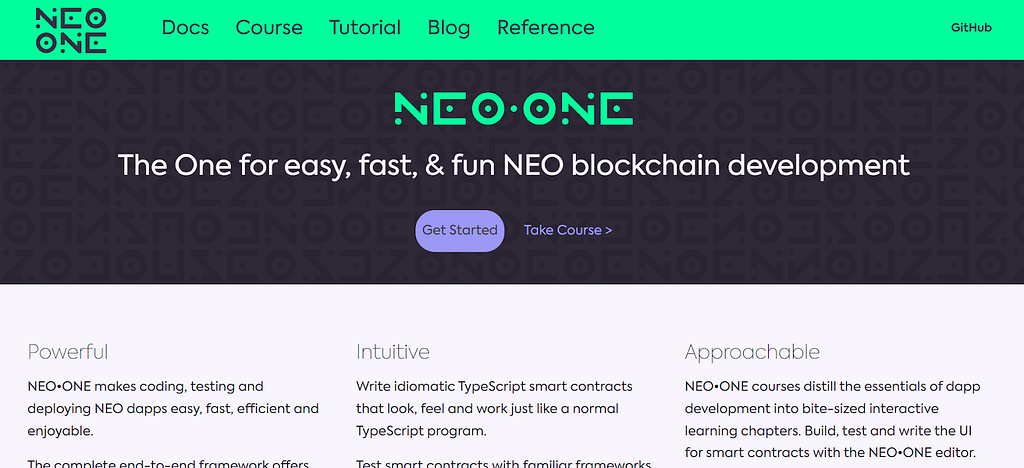
- Users can subscribe to new blocks as they are generated on the NEO blockchain, gaining access to essential information such as the block index, hash, and timestamp of creation.
- Similarly, they can also subscribe to new transactions as they are incorporated into blocks, obtaining details like transaction hash, sender’s address, and recipient’s address.
- Furthermore, users can subscribe to smart contract events, receiving notifications about events emitted by smart contracts on the NEO blockchain, including the contract address, event name, and associated parameters.
Factors to be considered while choosing Web3.js Subscribe Alternatives
When choosing alternatives to Web3.js for subscription capabilities in blockchain development, several factors should be considered to ensure the selected solution meets your project’s requirements. Here are the key factors to evaluate:
1. Blockchain Compatibility
- Supported Blockchains: Ensure the alternative supports the specific blockchain network you are working with (e.g., Ethereum, Binance Smart Chain, Solana, etc.).
- Multi-chain Support: If your project involves multiple blockchains, consider tools that offer support for various networks.
2. Subscription Features
- Real-time Data: Check if the alternative provides real-time data subscriptions for blocks, transactions, events, and other relevant data points.
- Event Filtering: The ability to filter events based on specific criteria (e.g., contract address, event type, etc.).
- Historical Data Access: Some projects may require access to historical blockchain data along with real-time updates.
3. Ease of Integration
- Documentation and Tutorials: Comprehensive and clear documentation, tutorials, and example code can significantly ease the integration process.
- Developer Community and Support: A strong developer community and responsive support channels can help resolve issues quickly.
4. Performance and Scalability
- Latency: Low latency is crucial for real-time applications to ensure timely updates.
- Scalability: The solution should handle high volumes of data and scale with your application’s growth.
5. Security
- Data Integrity: Ensure the solution maintains the integrity of the data being subscribed to and provides mechanisms to verify its authenticity.
- Access Controls: Proper access control mechanisms to secure sensitive data.
6. Cost
- Pricing Model: Evaluate the pricing structure, whether it’s based on the number of requests, the amount of data processed, or a subscription model.
- Free Tier: Availability of a free tier for testing and development purposes. Get started with Bitquery’s Free Developer plan now.
7. Reliability and Uptime
- Service Uptime: High availability and uptime guarantees ensure that the service is reliable and always accessible.
- Redundancy and Failover: Mechanisms to handle outages and ensure continuous service availability.
8. Compliance and Regulatory Requirements
- Data Privacy: Ensure the solution complies with data privacy laws and regulations relevant to your region and industry.
- Auditability: The ability to audit and trace transactions and events for compliance purposes.
9. Flexibility and Customizability
- Custom Subscription Options: Flexibility to customize subscription options and data formats as per your application’s needs.
- Integration with Other Tools: Ability to integrate seamlessly with other tools and services in your development stack.
Web3.js Subscribe is a powerful feature within the Web3.js library that allows developers to subscribe to real-time updates on various events occurring on the Ethereum blockchain. This capability is crucial for creating dynamic and interactive applications that can respond immediately to changes on the blockchain.
With key features like event listening, real-time updates, and WebSocket support, Web3.js Subscribe is widely used for monitoring transactions, listening to smart contract events, and receiving new block notifications.
When selecting alternatives to Web3.js for subscription capabilities in blockchain development, several critical factors should be considered to ensure the chosen solution meets the project’s specific requirements.
By carefully considering these factors, developers can select the most suitable alternative to Web3.js Subscribe, ensuring a robust and efficient solution for their blockchain application needs.
Web3.js Subscribe Alternatives was originally published in Coinmonks on Medium, where people are continuing the conversation by highlighting and responding to this story.
Recent Posts
Categories
Related Articles
Robert Kiyosaki: Missing Fort Knox Gold Would Unleash World Chaos, Collapse Economy, Crash US Dollar
Robert Kiyosaki warned that if Fort Knox gold is missing, the U.S....
ByglobalreutersFebruary 24, 2025dYdX CEO Predicts a Long DeFi Boom Starting in September
Charles d’Haussy, CEO of the dYdX Foundation, expects a major DeFi boom...
ByglobalreutersFebruary 23, 20254 reasons why soaring Mantra price may crash soon
Mantra price has gone parabolic since 2024, becoming one of the best-performing...
ByglobalreutersFebruary 23, 2025Shiba Inu Whale Activity Plunges 79% In Three Months — What’s Happening?
The meme coin market has seen a remarkable transformation in the past...
ByglobalreutersFebruary 23, 2025




Leave a comment